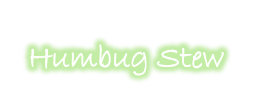My high school chemistry teacher, while a lovely person, often appeared to be channeling Ben Stein’s economics teacher from Ferris Bueller’s Day Off. Between that and teenage rebellion against chemist parents, my understanding of chemistry is surprisingly limited.
So before I eliminated salicylates I needed to figure out what they were (besides that they were acids) and who had a reputable list. So I called the chemists in the family. They told me that finding the salicylates in food should be relatively simple and that somewhere there should be a list of them done by some sort of pureeing and adding other chemicals and titration and other things that I didn’t understand because I spent too much of my high school chemistry class doodling.
What I did figure out however was that decent results would look like the following:
1) The way that they knew how much salicylate was in each food would be explained and actual measurements would be provided by food.
2) The method that they used would be explained.
3) They would have taken more than one sample of each food since organic materials vary in their chemical composition (at least to some extent).
4) An actual medical or nutritional journal would have published the results. They might be available on a blog, but they would not be available only on a blog.
5) Ideally they would be available on a highly reputable website, say by a government health department from a country with high standards for medical research.
So if you know someone who “tried this before and it didn’t work” there is always the possibility that they were using one of these other lists instead of a list that has actually been vetted.
Like say one of these, which I cannot recommend because they are too vague, do not explain their methods and are at times in direct conflict with the one that I DO recommend. Note the lack of actual metrics making part 2, figuring out a maximum tolerance, very difficult.
http://salicylatesensitivity.com/about/food-guide/
http://www.everydaywithadhd.com.au/user-assets/info_sheets/salicylate_food_chart.pdf
http://www.webmd.com/allergies/guide/salicylate-allergy
http://salicylateintolerance.blogspot.com/2007/12/simple-salicylate-food-list.html
The list that I chose to use is this one, which as you can see is from the New South Wales Health Services, in NSW Australia. It was originally published in the Journal of the American Dietetic Association. The first few pages explain what they did for those of you who paid attention during chemistry class. It meets the criteria.
https://www.sswahs.nsw.gov.au/rpa/allergy/research/salicylatesinfoods.pdf
I know that there are people who do not like this list, but for the purposes of the experiment, my goal was simply to keep overall levels very low so that I could see if their was an improvement and then to add them back to see at what level the compounds could be tolerated. I was looking for a few foods diet that had enough foods in it to potentially be a long term diet since I would be removing and replacing foods for a few months.
The list misses a few foods that we eat regularly and I would have preferred multiple samples, but for me, it was good enough. I cross referenced it with all the other allergens found a set of foods that were both low in salicylates and free of the major allergens and our odyssey began.

